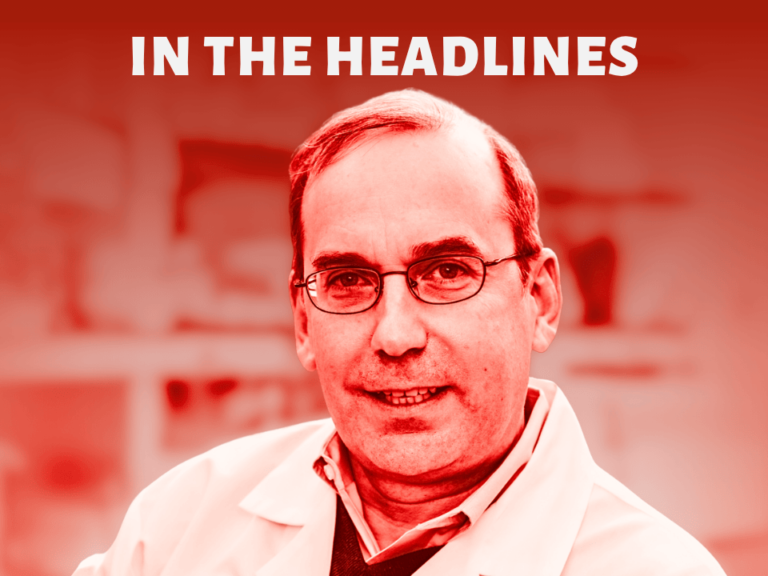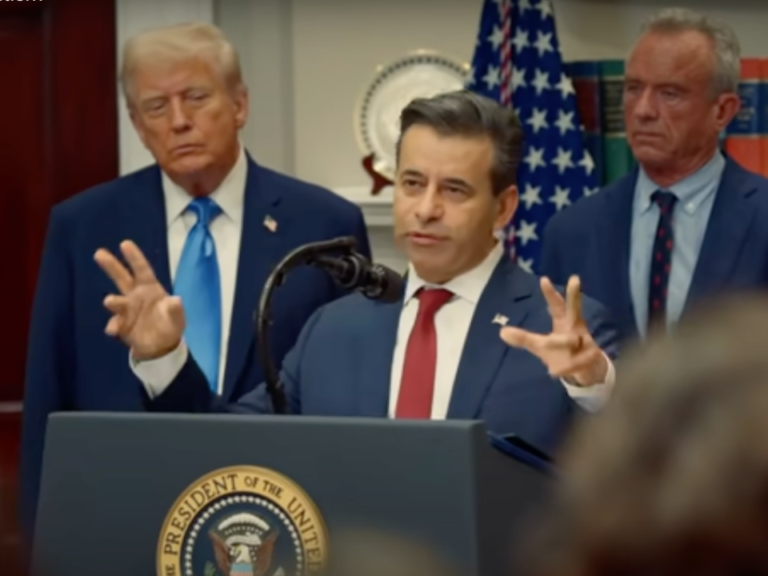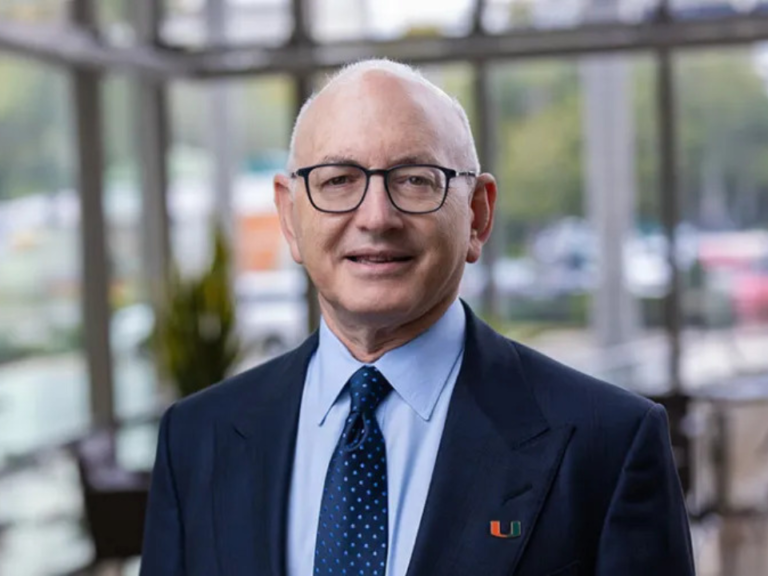As Jerome Yates reflects on starting up the University of Vermont Cancer Center in the early 1970s, he quotes Joe Simone: “When you’ve seen one cancer center, you’ve seen one cancer center.”
“That’s basically true, because it’s heavily dependent on what the existing expertise is and what the population is like, what the geography is like,” Yates, 85, a retired oncologist who has practiced and administered research at Roswell Park Comprehensive Cancer Center, the University of Vermont, NCI, and the American Cancer Society, said to The Cancer Letter. “It’s a combination of the environment, the expertise that’s available, and the opportunities. And you never know when some of the opportunities are going to occur.”
Yates started at the University of Vermont in 1974 with the goal of building a cancer center. At the time, he was the only medical oncologist in the state.
In 1976, Yates and UVM basic scientist Richard Albertini convinced Irwin Krakoff to move to Vermont from Memorial Sloan Kettering and become cancer center director.
An announcement of Krakoff’s move from MSK appears in The Cancer Letter’s archives:
IRWIN KRAKOFF, who heads the Div. of Chemotherapy Research at Memorial Sloan Kettering, will become director of the Univ. of Vermont Cancer Center. That center is being developed as a prototype cancer center in a rural setting; university officials were delighted to land someone with Krakoff’s prestige to run it.
“We really had an extremely strong program in the late ‘70s. And in fact, it was probably as strong as some of the programs that were in the major cancer centers, fortuitously, because the science was there, and the opportunity to develop a training program in medical oncology and to expand the medical oncology expertise, locally, was really rich at that time,” Yates said.
How do you develop a cancer center?
“It was really the three of us working together that put this together,” Yates said.
“We had strong basic science and drug development—brought [Krakoff’s] expertise to Vermont. He was able to get a contract for studying phase I, phase II drugs. I maintained the affiliation with the Cancer and Acute Leukemia Group B,” he said. “There were people doing basic cancer research. Dick Albertini was an MD, PhD who was looking at carcinogenesis and testing to determine what chemicals or exposures might be carcinogenic.”
Yates and Albertini received a planning grant in 1974 to develop a cancer center in Vermont at a time when funds were flowing from NCI.
“The ability to get a planning grant to develop the cancer center was also critical to stimulate the pursuit of R01s and build programs,” he said. “It was an opportune time. And you look at the way it is now where they’re funding 10 to 15% of the approved grants, it’s not so good. It’s a lot tougher for the young people today.”
“The planning grant on the research side allowed the development of cancer research programs that were really the forerunners of the core grant that we got three years later,” Yates said.
Yates also received a rehabilitation grant from NCI for patients with advanced cancer—which helped develop a clinical infrastructure for the future cancer center.
“I wrote a grant to look at the rehabilitation of cancer patients with advanced cancer, because I felt that the rural environment deprived them of a lot of opportunities that one could find in a cancer center like Roswell Park,” he said. “We essentially laid out a comparison between counties, in which we did this in an intensive way with periodic home visits, versus counties where the patients received customary care being followed only in the clinic.”
The rehabilitation grant allowed Yates to spend a lot of time getting to know the rural populations of Vermont.
He would give talks at social centers for people all around the Green Mountains—churches, and grange halls that organized activities for farmers, a part of Americana.
“That was the social access to lay communities,” he said. “And so, oftentimes, there’d be family practitioners who would be the point people to introduce you to the leaders in these areas, in the small communities.”
In getting to know the communities, Yates learned that the wives of farmers kept impeccable records, which allowed his team to determine what carcinogens may or may not have been present in these rural environments.
“There were lots of anecdotal reports of acute leukemia occurring in populations, and primarily childhood populations, where the residents were close to high tension wires,” he said. “One of the doctors thought we ought to take a look, because the other concern was—were there more miscarriages among the women who were pregnant in these areas?”
These records tracked the health of dairy cows, including any bovine miscarriages.
“Because of the kinds of records they kept, we were able to speculate that the high tension wires were not important in terms of malformations that occurred in the dairy cows,” he said. “And probably, to some extent, that the threat of the electromagnetic fields from high tension wires was not as important as some people had thought.”
There were other theories too. Were fiddlehead ferns, eaten by Vermonters in the springtime, causing bladder cancer? Were microwaves to blame for other cancers?
“We looked at the association of bladder cancer and eating fiddlehead ferns. It turned out not to be real,” he said. “There were studies then that subsequently were done in radar men on ships, where they got exposed to massive doses of microwaves. And they didn’t find that there was an increased incidence of cancer.”
“These are niches that provide unique opportunities to look at exposures and what the relationship between exposures are and cancers.”
Lung cancer was the most prevalent cancer in these populations, and Yates estimated that the smoking rates among farmers hovered somewhere around 70%—a proportion that is significantly lower today.
Yates, through the cancer prevention program he developed at UVM, decided to focus on smoking cessation programs.
“They were beneficial, but they were also difficult at the time,” he said. “Smoking was widespread, and, needless to say, in restaurants and actually even in schools, there were areas where people could smoke.”
The breakdown of labor—men had driver’s licenses and handled farm equipment, while women balanced checkbooks and kept records—proved to cause difficulties when a member of the family became sick.
“When the women would get breast cancer, there were difficulties with the male counterparts handling the financial side of the operation,” Yates said. “When the males got their lung cancer, and had to get treated either with radiation or chemotherapy or surgery, many of the wives couldn’t drive a car.”
Yates hoped to acquire state funding to set up a rehabilitation program for the spouses of patients: the men would learn to manage checkbooks, and the women would take driving lessons.
But the state only agreed to help patients—not their spouses—so these efforts never came to fruition.
“We thought that with a relatively simple program, if it was available, would make a big difference because one of the problems that occurs in rural populations, is transportation,” he said.
Instead, Yates’s team sent nurses, social workers, and physical therapists on house calls.
“There was some continuity of care, and we actually made it a little easier in terms of dealing with the problems that occurred because the nurses would see the patients in the home,” he said. “Similarly, the social workers were making periodic visits in the same homes, and they could help them with other logistical problems that were really social problems at the time.”
The rural environment of Vermont was different than in larger metropolitan areas, where Yates started out.
“There was an inverse relationship between how far away they were from either Hanover or from Burlington, where there were radiotherapy facilities,” he said. “The people that lived long distances away were less likely to get what was then state-of-the-art therapy, because of the transportation problems. And those kinds of problems continue to exist today.”
His 7 a.m. meetings with groups of 20 to 25 people to discuss patient care also wouldn’t have happened in a larger cancer center.
“Some ideas work in the rural areas that don’t work in the cities,” Yates said. “If you ask people in Buffalo to meet once a week, at 7 in the morning, with all of the disciplines, they’d look at you and say, ‘Well, why is that necessary? That seems like a crazy idea.’”
Meetings included social workers and members of the clergy—“and they would develop expertise in areas that you might consider kind of different.”
Vermont Cancer Center received its core grant in 1978. It retained an NCI-designation for three decades, until 2008, when it became the first Comprehensive Cancer Center not to seek renewal of the NCI designation (The Cancer Letter, Nov. 14, 2008).
VCC’s new director, Randall Holcombe, intends to lead VCC to NCI designation again (The Cancer Letter, Oct. 1, 2021).
“What he’s doing is trying to put together programs that will be competitive in terms of a core grant. And that’s not easy,” Yates said. “We did it way back when, because there were pharmaceutical chemists existing in the chemistry department in the university.”
“And so, one’s got to look at the expertise that’s available there, and try to put it together into programs that will have sufficient R01 or program project, or SPORE support—there are no SPOREs in Vermont—so that they will be competitive in terms of a core grant,” he said.
The 1970s was a good time to start a cancer center in Vermont—“because of the resources and the environment and the support we got from the university.
“And we’re trying to help him put that back together again in Vermont,” Yates said. “And I’m confident Randy knows how to do it. He did it in Hawaii. And I think with the right kind of support, he can do it in Vermont.”
Yates’s advice for cancer centers seeking NCI designation in 2022:
“The approach, I think, is the same, no matter where you are, You have to look at your environment. You have to look at the personnel that are available. You have to look at where the opportunities are, particularly now with the funding structure, because you could be tilting at windmills if there’s not external funding available to do this.
“Now, because some of those funding sources have dried up for a variety of reasons, it’s a little tougher, but the approach is still the same. You’ve got to have a strategic plan for how you’re going to do it. And that’s what we did with the people that were available and the opportunities.
“And that’s what Randy is trying to do now in Vermont.”
Yates spoke with Alexandria Carolan, a reporter with The Cancer Letter and associate editor of the Cancer History Project.
This column features the latest posts to the Cancer History Project by our growing list of contributors.
The Cancer History Project is a free, web-based, collaborative resource intended to mark the 50th anniversary of the National Cancer Act and designed to continue in perpetuity. The objective is to assemble a robust collection of historical documents and make them freely available.
Access to the Cancer History Project is open to the public at CancerHistoryProject.com. You can also follow us on Twitter at @CancerHistProj, or follow our podcast.
Is your institution a contributor to the Cancer History Project? Eligible institutions include cancer centers, advocacy groups, professional societies, pharmaceutical companies, and key organizations in oncology.
To apply to become a contributor, please contact admin@cancerhistoryproject.com.














